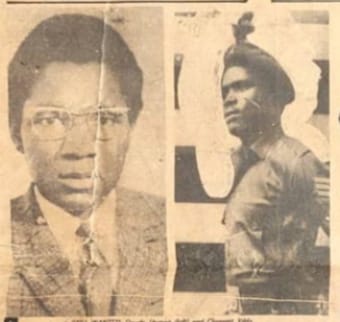Copper is all around us. Metal is both ever-present and invisible in our world. Copper makes reading the words on this screen possible. And the global spread of artificial light, electric power and telecommunications all required ever-increasing quantities of copper.
Where does all of this copper come from? How was it produced, distributed, controlled, and sold on an ever-increasing scale? These are some of the questions addressed in a recently published book, Born with a Copper Spoon: A Global History of Copper.
The book is a global study of a metal that has transformed the globe. Contributors to the book cover North America, Latin America, Europe, Central Africa, the Middle East, East Asia and Oceania and stretch from the early nineteenth to the early twenty-first centuries.
Read more: Zambia’s copper mines hard-baked racism into the workplace by labeling whites ‘expats’
Why are these important questions? Because of the ubiquity of copper and the fact that the world’s collective rehab from fossil fuels may cause a renewed addiction to a new mineral-based economy. Electrification, the pillar of the green transition, requires huge amounts of copper. Projections expect a doubling of copper consumption by 2035 in order to reach zero-emission energy goals. Faced with the enormous task of electrification, the share of the global energy sector will increase to 40 % of total copper consumption in the next two decades
They are also important questions because countries that have an abundance of copper have failed to benefit from it. Zambia is a case in point. It produces 6% of the world’s copper but is still one of the poorest countries in the world.
Born with a Copper Spoon requires us to think differently about our material lives and energies we use, by looking at the places where our minerals are actually produced and the way in which the production and distribution of these minerals are organised.
Will the next world of copper finally evolve as the long-anticipated resource blessing, or is a new global scramble, in which states and companies seek to secure access to the precious metal, going to determine otherwise? Copper became associated with the idea of a resource curse for many people. Zambia’s first President Kenneth Kaunda once remarked that his country is “paying the price for having been born with a copper spoon in our mouths.”
He knew too well that the abundance of copper had caused Zambia a host of problems.
Worlds of copper
Our book looks at different ‘worlds of copper’ that have arisen over the last century and a half. The term ‘world of copper’ was first coined by British historians Chris Evans and Olivia Saunders to describe a globally integrated production system that connected the smelters of South Wales to copper mines across the globe between 1830 and 1870.
We see this as the first world of copper. This world was then supplanted by a second world of copper centred on the US. This involved the rise and dominance of American mining companies as huge integrated enterprises controlling the production, processing and distribution of the commodity. “From mine to consumer” was the slogan of the notorious American copper mining company Anaconda, active in Montana and Chile. Underpinning the American world of copper was control over the production chain through the use of new business organisations and technologies.
Technological changes in mining and processing that were quite literally ground-breaking allowed for ever-greater quantities of copper to be mined and processed. Open pit extraction was first developed in North America and soon spread to Latin America and Central Africa, with often comprehensively destructive environmental consequences. Many of these pits are still being mined today.
The American world of copper denotes both the power of American companies, as well as the model of controlling copper chains that is eagerly copied by non-American copper companies. This patterns becomes global: it is applied in Japan, the European empires that control the Copperbelt as well as in Latin America.
In the mid-twentieth century, the American world of copper disintegrated during decolonisation in the face of resource nationalism and a shifting geography of production. A wave of nationalisations by new states brought about a postcolonial world of copper, built around state power, economic sovereignty and state-level international co-operation. Developing states saw copper as their ticket to economic development and modernity. The dream of the red metal was however short-lived.
This postcolonial world of copper collapsed in the 1990s after a long slump in the industry. Multinational private companies reasserted themselves over the industry, but the US and European companies never regained their once dominant position.
Each copper world was marked by several defining features: underlying institutions, organisations, labour practices and produced by global connections and interactions. Identifying and understanding consecutive worlds of copper is crucial to how we understand the development of the global copper industry.
Our current energy transition could herald a new copper world. Renewed demand for copper will likely intensify mining activity in DR Congo, Zambia and other parts of the African continent and could place states in a stronger bargaining position.
The need to think differently
Copper’s status as a global industry has waxed and waned. The history of the metal is not a story of steadily increasing and dependent global connections as we move towards the present. It is also a history of disconnections and efforts to de-couple regions from the global economy.
Our book is a contribution to global history and the story of copper is necessarily a global one as extracting, refining, buying, shipping and consuming the metal takes place around the world. Global history is about more than connections, however.
Our book is also about periods of deglobalisation and attempts to server connections, especially in the mid-twentieth century when a bitter contest over ownership of mineral resources briefly threatened a major realignment of the world economy. In 1967, several of the world’s largest copper producers (Congo, Chile, Peru and Zambia) met in Lusaka to establish a copper cartel that would control the industry and turn an abundance of natural resources into national economic growth.
That’s an ambition that still needs to be fulfilled.
Source: Conversation.com





